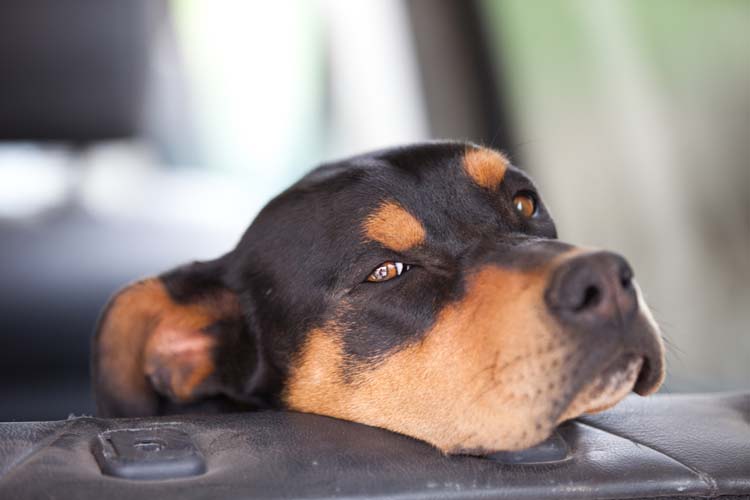Dog Car Sickness
Ever avoid a long road trip because you or someone you know is worried about experiencing car sickness? Despite common belief, humans aren’t the only ones who suffer from this condition. Dogs can actually suffer from carsickness as well. Dogs may get sick on car rides for many reasons, including fast motion, anxiety and too much visual stimulation.
How to Prevent Car Sickness in Dogs
Choose a Reward
One of the best ways to curb these symptoms is desensitizing your dog to the car and ride. This must be done at your dog’s own pace while making a positive association for him. To help build the positive association, you must have something your dog will find rewarding and motivating. It will be up to your dog what the best reward is.
Some dogs would prefer their owner’s attention or favorite toy as a reward. Others are motivated by small, chewy training treats. It’s important to find a reward your dog is willing to work for and finds rewarding.
Keep Distractions to a Minimum
When beginning this dog training exercise, make sure there are no distractions. Make the environment as pleasant as you can for your dog. Doing so will set your dog up to succeed by making the environment less overwhelming.
Lure Your Dog to the Doorway
Start without the car running. Open all of the doors and lure your dog to the doorway that will be used most frequently. Remember to praise and reward any movement toward the vehicle. Continue these steps until he can be easily lured toward the door at least nine out of 10 times. Once he complies 90 percent of the time, you can start introducing new steps to the exercise.
Lead Him to the Vehicle
When your dog is at the door, lure him into the vehicle using his favorite reward. If he chooses not to follow through, you can gently lift him into position. Once in position, reward him heavily, making a positive association with the car for your dog.
RELATED: Driving With Your Dog
Repeat Loading and Unloading Process
After the verbal praise and reward, you can lure the dog back out of the car, and attempt the loading and unloading process again until he finds getting into the car rewarding enough to perform the behavior at least nine out of ten times on their own.
Introduce New Variables
Once he gets comfortable with the car itself, you can start adding new variables, such as closing one of the doors. Introduce the new variables one at a time, making sure your dog is performing the required behaviors at least 90 percent of the time before moving on and adding another variable.
For example, at first only close one door, then move onto two and so on until each new variable becomes comfortable to your dog. As long as the dog is compliant a minimum of nine out of 10 times and doesn’t overreact, you can keep adding more. Once you’re able to close all of the doors without your dog overreacting, you should attempt to start the car. Continue to add praise and rewards as long as he’s able to stay calm for at least a minute at first. As time goes on, you can start adding more time to the exercise.
Go on a Short Ride
Once the dog is able to remain inside your running car without negative reactions, try taking a short drive. Drive the car just around the block at first, praising him as you go. When working on any new behavior with your dog, it’s important to remember your dog needs to be comfortable for the training to work. Be patient.
When your dog becomes comfortable with this new action through praise and positive reinforcement, there is no reason for your dog to become scared or anxious with it again. It may take some time to cure a dog’s carsickness, but it’s worth it when you have a new drive time buddy!
You may also like: Spring Dog Health Tips





